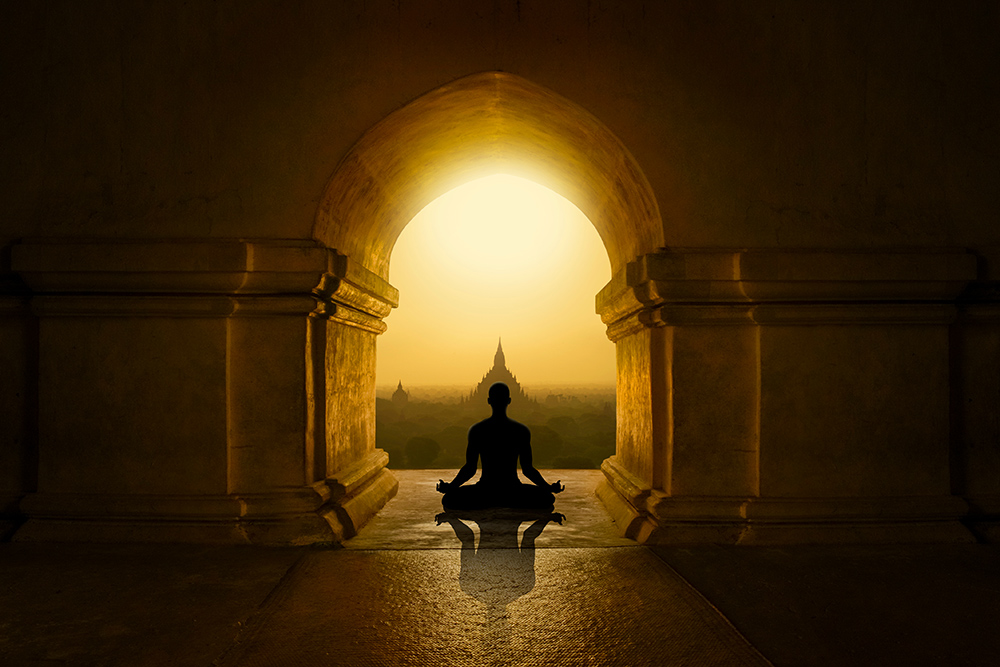The Wheel of Truth by Ajahn Sumedho | IV
Book Extracts
Ven. Ajahn Sumedho explains how our relationship to everything we experience can produce (or not produce) an awakened mind.
 ©
© shutterstock
The second line of ‘apārūta tesaṁ amatassa dvārā’ is ‘ye sotavanto pamuñcantu saddhaṁ’ – ‘let those who can hear bring forth their faith.’ Sotavanto is one who listens, a listener. It’s when your mind is open and you’re paying attention. It doesn’t have to be listening for any particular thing; it’s a state, a way of being present. You can pay attention to things externally, or you can listen to yourself thinking or feeling something. You can trust that listening and begin to take refuge in your ability to listen. You begin to hear yourself and the kind of things that go on – the complaining, the resentment, the fears, the doubts, the worries, the jealousies, the anxieties that we produce in our minds. We no longer see any need to grasp; we no longer want to grasp them. Just by paying attention to them, our relationship with it all changes. We are not becoming someone that’s angry, discouraged, depressed or worried. We no longer grasp the conditions so they drop away. They cease, they change, they dissolve in the mind and what is left is that state of natural purity, of radiance, of silence, infinite space.
Amaravati Temple is for that kind of contemplation, and you are welcome to come here with this idea of letting go of the world – not to bring the worldly problems you have with you, but to see it as a chance to offer, to give food, robes or medicines to the Sangha, or to come and meditate, to determine to live by the moral precepts. This is all part of our spiritual development – the dāna, the generosity, the sīla, the moral restraint, and the bhāvanā, the spiritual development. Sit here with the Buddha-rūpa in an act of blessing. This particular mudrā of blessing has a Dhammacakka in the palm of the hand, the symbol for the teaching of the Lord Buddha, the Four Noble Truths. This is the mudrā of the Buddha-rupa that our teacher in Thailand, Luang Por Chah, brought to England when we first came here in 1977. He brought a little rupa made of brass with this particular mudrā and gave it to us when we lived in the Hampstead Vihara in London.
The temple is the mind itself, that natural state of purity, but a bricks and mortar type of temple is also a symbol for that. It’s bound into the earth; it’s got very deep foundations and is going to last 1,000 years at least. This mortal form of a temple, this structure made out of bricks, mortar and wood, rises up to this enormous roof that goes on up to a fine peak at the very top. In this lovely golden point at the top of the structure there are Buddha relics enshrined. So it has this sense of pointing up to the Deathless, to the infinite, to the sky. The sky is a symbol for the Deathless – it goes on and on and on, it’s not contained, it has no form. It’s a symbol to contemplate because it reminds us of our true nature. We have these elements, just like the bricks, the tiles and the wood; we have the earth, fire, water and air, the four elements to live with and to respect. How do we relate to them? Do we relate to them in a selfish, confused, ignorant way, or do we relate to them with wisdom, with compassion, with understanding? These elements comprise the body with its eyes, ears, nose and tongue and the mind itself with its thoughts, feelings and emotions. We begin to relate to all this in an honest, direct and wise way, rather than being merely caught up in the momentum of thinking and the emotions without reference to anything outside of that.
Con-temple, con-template: contemplation is a good word because with meditation you’re opening your mind. You’re listening, and you are not taking a stand or holding to any viewpoint. Your mind is spacious and open, awake and aware – it’s receptive and then you realize the infinity of mind, the all-embracingness, the underlying unity, that which embraces everything. When we open ourselves in that way with mindfulness, then we’re one. We’re not this person, that person, this group or that group. Through our refuge in the Dhamma, we get beyond the limitations of our own human form and human conditioning.
The Wheel of Truth by Ajahn Sumedho, Amravati Publications, pp 95-7




